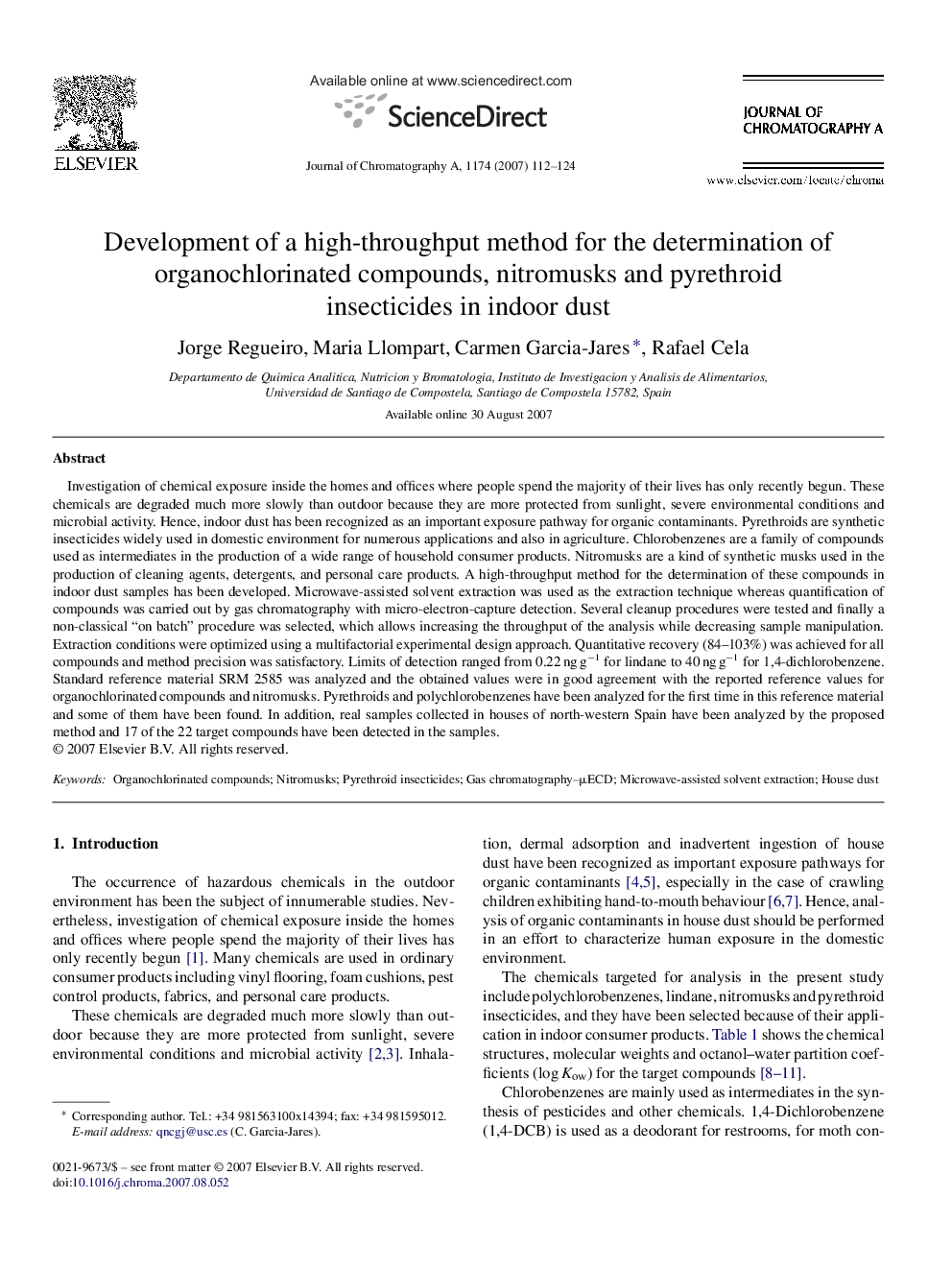| Article ID | Journal | Published Year | Pages | File Type |
|---|---|---|---|---|
| 1207705 | Journal of Chromatography A | 2007 | 13 Pages |
Investigation of chemical exposure inside the homes and offices where people spend the majority of their lives has only recently begun. These chemicals are degraded much more slowly than outdoor because they are more protected from sunlight, severe environmental conditions and microbial activity. Hence, indoor dust has been recognized as an important exposure pathway for organic contaminants. Pyrethroids are synthetic insecticides widely used in domestic environment for numerous applications and also in agriculture. Chlorobenzenes are a family of compounds used as intermediates in the production of a wide range of household consumer products. Nitromusks are a kind of synthetic musks used in the production of cleaning agents, detergents, and personal care products. A high-throughput method for the determination of these compounds in indoor dust samples has been developed. Microwave-assisted solvent extraction was used as the extraction technique whereas quantification of compounds was carried out by gas chromatography with micro-electron-capture detection. Several cleanup procedures were tested and finally a non-classical “on batch” procedure was selected, which allows increasing the throughput of the analysis while decreasing sample manipulation. Extraction conditions were optimized using a multifactorial experimental design approach. Quantitative recovery (84–103%) was achieved for all compounds and method precision was satisfactory. Limits of detection ranged from 0.22 ng g−1 for lindane to 40 ng g−1 for 1,4-dichlorobenzene. Standard reference material SRM 2585 was analyzed and the obtained values were in good agreement with the reported reference values for organochlorinated compounds and nitromusks. Pyrethroids and polychlorobenzenes have been analyzed for the first time in this reference material and some of them have been found. In addition, real samples collected in houses of north-western Spain have been analyzed by the proposed method and 17 of the 22 target compounds have been detected in the samples.
